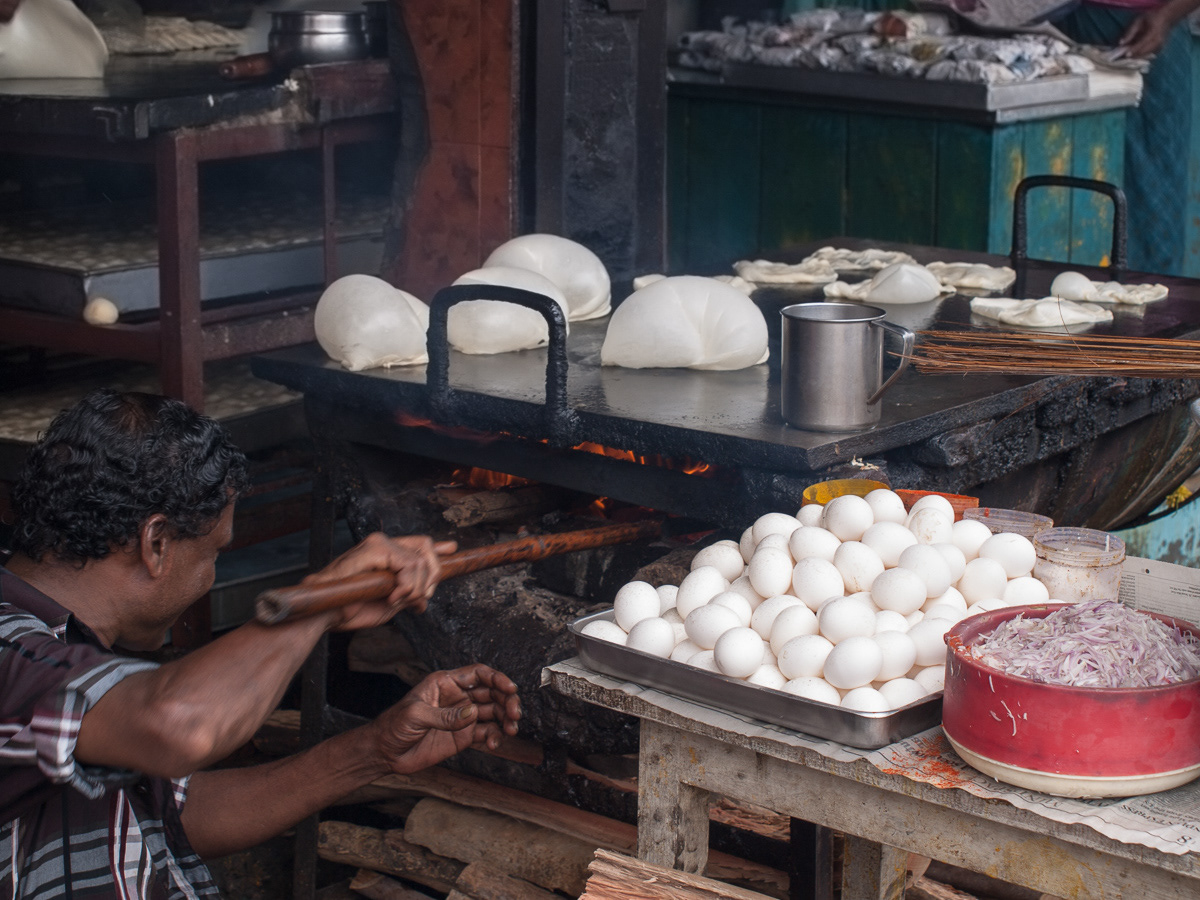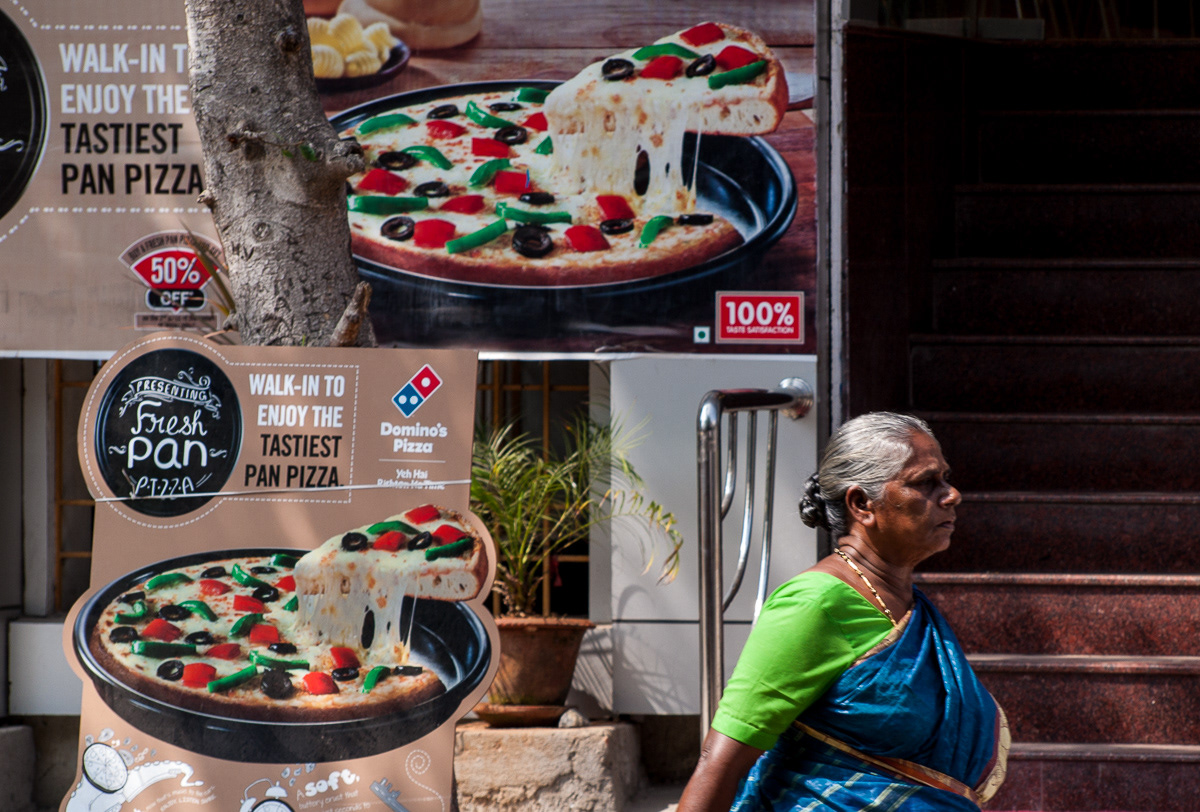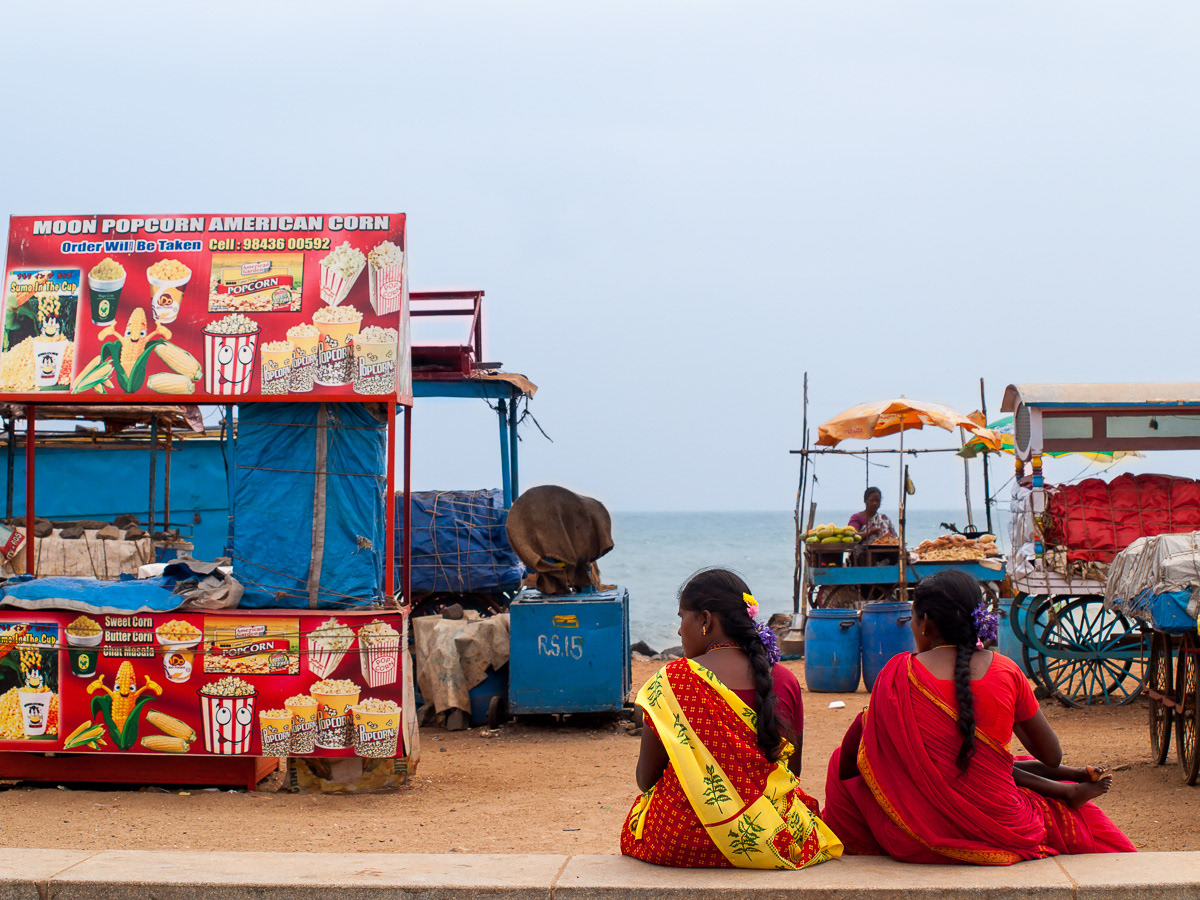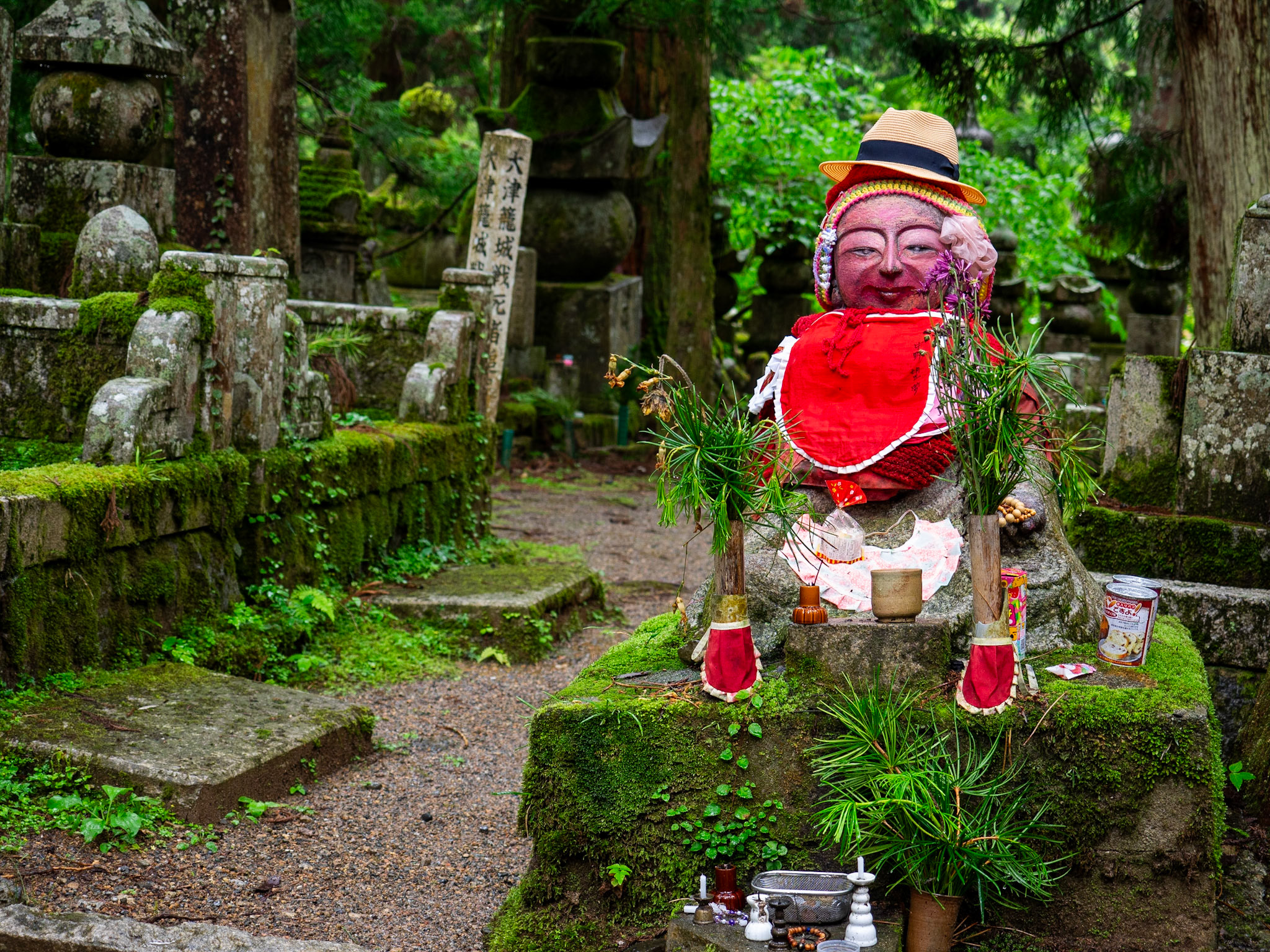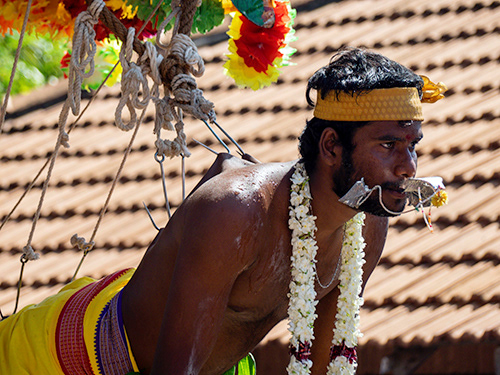Food
Indian cuisine is almost ridiculously diverse. Dishes and flavourings are intensely regional, sometimes aligning with state borders, but at other times following geographical similarities & boundaries. There is a wealth of information available on Indian food, ranging from the generic to the forensically foodie focused. This post is intended to give a bit of a broad sweep overview, and point out some particularly interesting dishes & variations I’ve come across. Note I have a particular soft spot for South Indian food in all it’s forms, a set of different cuisines that is much harder to come across outside of India, though more influential on other Asian & S.E. Asian, even African cuisines, than North Indian or Mughal cooking.
Regional diversity and names.
Some Indian dishes have spread across India and are on the menu or readily available no matter where you are. Tandoor dishes, dosais, various saag preparations, particularly saag paneer, puris, and dahl makhani, are examples that are found from North to South. However some dishes have the same name but markedly change their character from place to place. A simple example is the paratha (or parrotta). In Bengal it may be a relatively small thick disc of bread, usually stuffed. From Delhi to Rajahstan it is a layered, broad, relatively thin bread, either plain or stuffed. Round Kumbakonam in Tamil Nadu, it appears as a rich flaky bread, clearly the ancestor of the Malaysian roti, usually plain, but sometimes with egg to create something akin to an egg murtabak.
Meals & timings
Outside of some middle class or hotel restaurants it is common for the menu & food choices to change over the course of the day. Breakfast is traditionally relatively small. In the South a choice of dosai, uttapam, idli, vadai, with sambar and a coconut chutney, or pongal, a rice dish (or variants of this). In the North, flat breads – chappatti, paratha, with a simple veg dish, pickle & dhal are the norm. Egg dishes are also popular for breakfast in the North, and nowadays many Indians can’t resist adding some ‘toast butter jam’ to their morning meal. Though I’ve often seen people rounding off such a Westernised breakfast with their familiar Indian choices.
These dishes tend to disappear from menus for lunch, replaced by more substantial options, only to reappear from 4.00 pm on-wards as light evening meals or snacks. There are exceptions to this, but searching for a lunchtime dosai can be a fruitless task. Instead, at lunchtime, thalis or ‘meals’ take centre stage.
Big cities will offer snacking options all day, but it is really from mid afternoon till late that the Indian love of snacks, and street food snacks comes into play. From the nationwide spread of pani puri, samosa, and bhaji, to more substantial & locally specific chaat dishes, and various lightweight crunchy nibbles, street vendors, coffee & tea shops, and local restaurants offer a plethora of these. So it’s no surprise that many Indians don’t eat a large evening meal. This option is the province of fancy restaurant meals, special occasions, or, conversely, the main family meal for poorer households.
Note – Not all Indian food in India is hot, or even spicy. There are plenty of Indians who don’t like to set their mouths afire with chilli – that’s best left for young, drunk and competitive Westerners.
Thalis & ‘Meals”
A thali is a classic lunch option, and describes the manner of serving food rather than a specific dish. A very common menu listing or signage for a thali restaurant is ‘meals’. I’ve seen more than 30 distinctly regional thalis described, and this is without taking into account just which variations of vegetable dishes may appear on your plate or banana leaf. So, when travelling round India, don’t expect that eating a thali for lunch every day will be monotonous or a chore. More traditional and locally focused thali restaurants will continually top up your thali with more of the dishes you’ve eaten, so by all means play favourites from the various options on your plate knowing you’ll get even more of these. About half the time a thali or a meal is ‘pay up front’ at the cashier when you arrive, collect a docket, take a seat, and it’ll arrive.
Given that a thali is essentially rice, with at least half a dozen side dishes ranging from savoury to sweet, the key decisions are; in the North – to veg or non-veg thali, and in the South – how elaborate a ‘special’ thali do you wish to order. In this case the quantity of each side dish doesn’t change – more & varied options appear, both savoury & sweet.
In the North of India, thalis are available, but just as common are meals, with a core component of a bread variety, dahl, and a flexible number of curries. Rice may or may not appear. Pickles take over from sambar.
As I mentioned I have a soft spot for South Indian thalis, which are invariably veg thalis. One particular favourite variety are Andhra style thalis. Andhra cuisine, originating from the south of Andhra Pradesh (& Teleganna) is renowned as particularly fiery, with a love of chillis. Interestingly a traditional Andhra thali, served on a banana leaf, is eaten, dishes wise, from left to right, finishing with the sweet components. I particularly like the textural component of Andhra thalis – nuts, or fresh crunchy sprouts can feature as an option. Another delicous option are Andhra chillies as a side dish – chillies marinated in curd, sundried, then flash fried. Fiery, smoky & fruity at the same time. Andrha thali restaurants pop up all over India – Mysore has the RRR restaurant, Bangalore has several, etc etc.
Another fascinating thali option is the Odisha thali. Available as veg or non-veg, often with fish, this is both delicious, and a very different array of tastes. A mix of Southern coconut, the Bengali love of slightly bitter flavours, and interesting dahl & grain combos, it’s well worth seeking out if you’re in Odisha. The fancy Odishan restaurant at the Mayfair Lagoon Hotel in Bhubaneswar does a marvellous version.
Some random notes on food
Biryani. A dish with many regional variants, particularly where Islamic kingdoms or the Mughals held sway. The Hyderabadi biryani is a different creature to that of Delhi, much less the Kolkata biryani, with it’s potatoes & egg. That said, one of the most memorable biyanis I’ve had was a chicken biryani at a lunch biryani joint in Alleppey in Kerala. In Mysore, the Royal Orchid Metropole Hotel specialises in delectable rich biryanis, including the rarer vegetarian options for dinner.
Chaat & street snacks. Whether from a mobile street stall, for things like pani puri – puffed fried balls filled with tamarind water & potato or chickpeas; that come in sets of five, to the more substantial offerings of vada pav & pav bhaji – buns with gravy & shed loads of butter – popular in Mumbai & Kolkata, but less so elsewhere, that are served from a fixed stall or small restaurant, there’s a world of snack food. The names often are changed or localised, but the principle’s the same – fast, tasty, usually a riot of flavours – to keep you going. The more substantial chaats, like papdi or papri chaat, a combination of crunchy fried wafers, boiled potato, chickpeas, yoghurt, tamarind chutney & fresh coriander are now appearing on upmarket restaurant menus. I had a delicious modernised version of this papri chaat, snap frozen in liquid nitrogen, at Gabbars Restaurant in Kolkata. Some personal favourites to look out for, apart from the usual dosai, biryani, and curry dishes. Chole Bathura – a football sized puri with a spicy chickpea & tomato sauce. Uttapams – a cousin of idlis & vadai, - when you see a menu offering a range of specialised uttapams go for it. Variations can include cashew nut, crispy onion, fenugreek (or methi). Seasonal & local fruit is something else to keep an eye out for. Mangoes are various across the season, and some of the best don’t transport well. Similarly, Mysore is home to a delicious small banana, that grows nowhere else and has PGI status.
Global Indian food. India has always adapted foods from other cultures or places. There are tomatoes, chillies, and the potato, for starters. Kolkata has a whole branch of Chinese-Indian food, of which the most common example is Chicken Manchurian, found on menus across the country. The globalised world is obvious in contemporary Indian food. There is some great modern Indian contemporary food to be had, particularly in the major cities, and globally aware smaller centres like Pondicherry, Mysore & Pune. Equally, in cities, eating out for many Indians means going to a Lebanese, Italian, health food salad & baguette store, or some other trending cuisine. Indians have taken to their version of pizza like ducks to water, (so long as it has plenty of cheese on it) – even small towns will have a pizza joint. Some trends are inexplicable – for example, the Kolkatans love for Maggi 2 Minute Noodles, even in trendy bars, is something I just don’t get. This doesn’t mean that a generic restaurant, even in hotels, will do a Western style dish well though, even if it’s offered on the menu. In other words, if the menu has Indian options they’ll always be solid to very good. You can’t say the same about their attempts at pasta.
Drinks & Alcohol
Tea & Coffee. India is split roughly north to south re these beverages. Northern India sees chai as the drink of choice at local tea stalls, whereas coffee takes over in Karnataka, Tamil Nadu & Kerala. On the other hand modern coffee shop chains, such as Cafe Coffee Day, are widespread in cities & large towns. Although much more expensive than street-side offerings, these local chains do offer both air conditioning and free wifi which can be useful.
Fruit juices are popular, if often with added sugar. If you’re looking for an alternative to endless waters. then almost everywhere can produce a fresh lime soda. These come as ‘sweet’ or ‘salt’ – the salt version is particularly good for rehydration, and you can often add sugar or salt to taste. An interesting local alternative are the many varieties of Jeera drinks. Jeera (Cummin) drinks come as ready bottled teas & soft drinks, or sometimes made fresh as jeera water.
Alcohol. Alcohol in the form of beer, usually local, of which there are an increasing number of brands, and spirits, again usually local versions & labels, is a tricky subject in India. It depends very much which State you’re in – Gujurat being famously ‘dry’, & recently Bihar has joined the prohibitionist ranks. West Bengal has the most liberal licensing laws, and the fewest ‘dry’ days. Though nationwide there are ‘dry’ days when alcohol cannot be sold or served, each State has their own additional ‘dry’ days. This may apply even in luxury hotels. Watch out for election & vote counting days – sudden bans on alcohol can catch you out with these. It’s frustrating to look at a closed designer bar in a five-star hotel, and think ‘Well, at least it’s stopping me having a beer & rioting about the local election results’. Local beer brands often come in ‘heavy’ forms – these have a much higher alcohol content – for example Haywards 5000 is between 7% to 8% alcohol.
Venues. In general venues serving alcohol correlate to the size of the city. Delhi, Mumbai, Bangalore & Kolkata have bars as comfortable, idiosyncratic, stylish, and pleasant as any other country, and in many cases better. Outside the cities your best bet is in the larger hotels. Many have at least two bars – if so, one will almost certainly become a nightclub at some stage of the evening, so drinking there depends on your tolerance for extremely loud music & possibly a cover charge. It’s worth remembering that most State run Tourism hotels have liquor licences, even when nowhere else does, though the quality & service can be hugely variable to say the least. Local drinking dens do exist – the best are good value, with reasonable food and a curious crowd who’ll happily accept the presence of Western couples. The worst are best avoided – you’ll pick this up pretty quickly, and there’s no shame in beating a retreat. If a restaurant has a ‘family’ section, it’s unlikely alcohol will be served there – try the other section.

